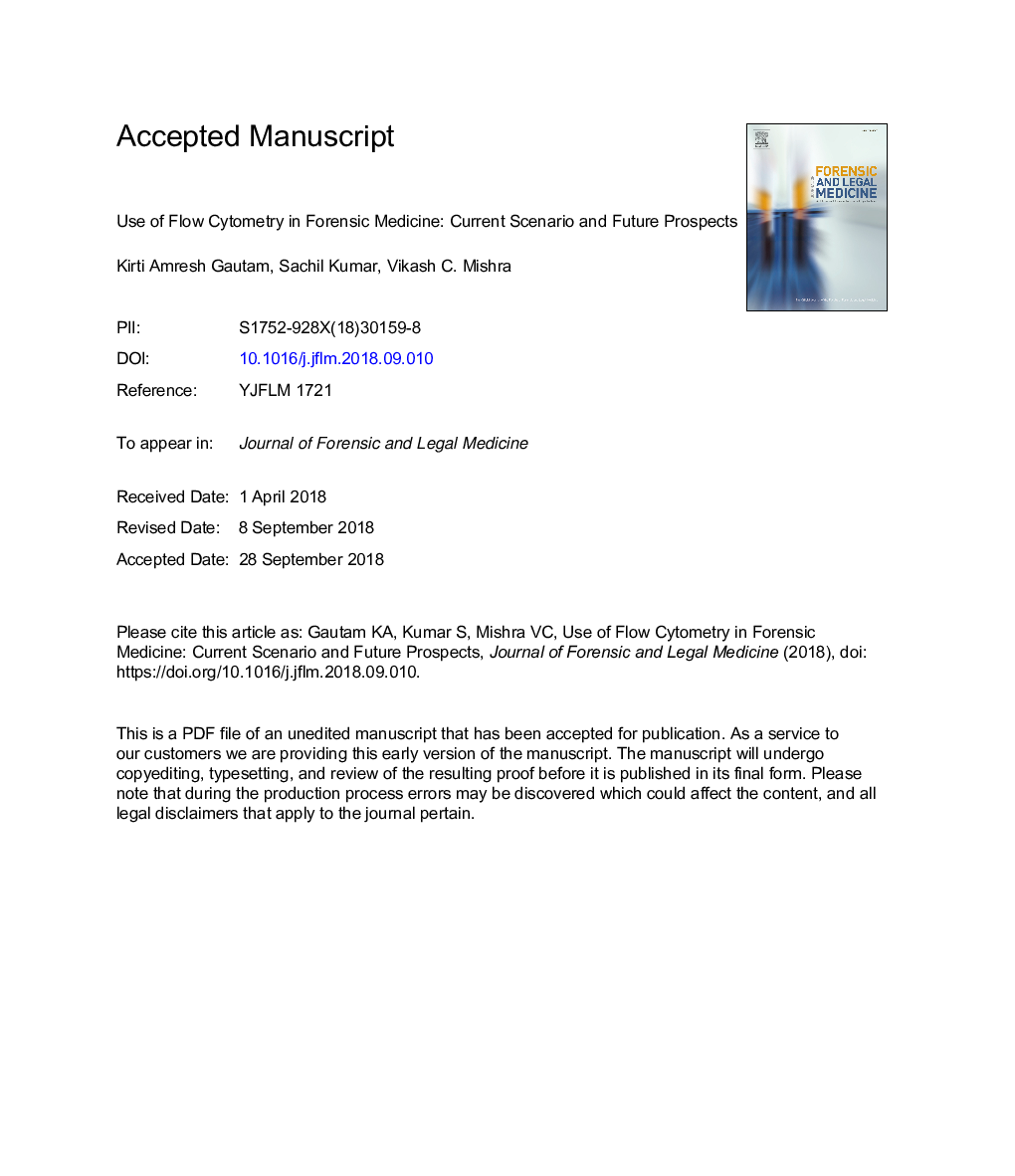| کد مقاله | کد نشریه | سال انتشار | مقاله انگلیسی | نسخه تمام متن |
|---|---|---|---|---|
| 11032553 | 1645530 | 2018 | 16 صفحه PDF | دانلود رایگان |
عنوان انگلیسی مقاله ISI
Use of flow cytometry in forensic medicine: Current scenario and future prospects
ترجمه فارسی عنوان
استفاده از جریان سیاتومتری در پزشکی قانونی: سناریوی فعلی و چشم انداز آینده
دانلود مقاله + سفارش ترجمه
دانلود مقاله ISI انگلیسی
رایگان برای ایرانیان
کلمات کلیدی
موضوعات مرتبط
علوم زیستی و بیوفناوری
بیوشیمی، ژنتیک و زیست شناسی مولکولی
ژنتیک
چکیده انگلیسی
Several methodologies are being used on different biological, physical and chemical indicators to determine the postmortem interval (PMI); however, most of them are not completely accurate. Flow cytometry is an emerging technology widely used for single cell analysis in the field of clinical pathology. Studies on flow cytometry and its application in the field of forensic medicine were retrieved from systematic web searched of different databases including “MEDLINE”, “ScienceDirect”, “PubMed” and “Google Scholar” using keywords forensic science; forensic medicine; forensic investigation; flow cytometry; DNA; postmortem interval; vitreous humour with the last search performed in January 2018. A total of 43 publications have been reviewed, and out of them 22 studies met our criteria and have been cited in this article. A handful of studies have evaluated the application of flow cytometry in forensic medicine for estimation of the PMI and identification of the perpetrator of sexual assault cases. Flow cytometry is also useful for quantifying the ABH antigens in red blood cells as well as in other human samples that can be further used for personal identification. In conclusion, flow cytometry is more sensitive, faster and easy compared to the other methods of investigation, thus making it a preferred method. However, a large numbers of studies with the application of flow cytometry on different cases of death are required to establish a universally accepted rate of DNA degradation to avoid errors in judgment.
ناشر
Database: Elsevier - ScienceDirect (ساینس دایرکت)
Journal: Journal of Forensic and Legal Medicine - Volume 60, November 2018, Pages 42-44
Journal: Journal of Forensic and Legal Medicine - Volume 60, November 2018, Pages 42-44
نویسندگان
Abdulsallam Bakdash, Sachil Kumar, Kirti Amresh Gautam, Vikash C. Mishra,
